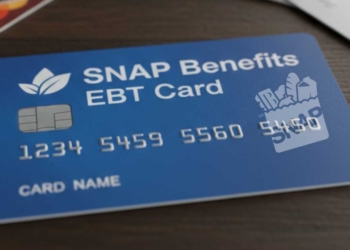SSDI (Social Security Disability Insurance) is a program run by the Social Security Administration that sends monthly checks to people who’ve become disabled, as long as they’ve worked and paid into Social Security long enough.
The core rules for qualifying haven’t changed much in 2025, but every year a few numbers get updated (like how much you’re allowed to earn, the work credits, etc.), and it’s always good to know exactly when your money is coming. That’s why we’re taking a quick look at the payment dates too.
First: What is SSDI and who is eligible?
Eligibility for SSDI is based on two fundamental components: work-related insurance and a medical definition of disability. Regarding the nonmedical requirements, you must have worked long enough in jobs covered by Social Security and paid the corresponding taxes, which is known as being “insured.” This is measured through a system of work credits.
In 2025, you earn one credit for every $1,810 of covered income, up to a maximum of four credits per year. Most people need to have accumulated at least 40 credits over their working life, and of those 40, 20 must have been earned in the 10 years immediately preceding the onset of their disability.
This recency rule generally applies to people 31 years and older. For younger people, the requirements are less strict; for example, someone who becomes disabled before age 24 might need only 6 credits earned in the previous 3 years.
Without sufficient work credits, you do not qualify for SSDI, so in those cases you should explore the Supplemental Security Income (SSI) program, which is based on economic need.
The medical condition for qualifying for SSDI
On the other hand, the medical requirements follow a rigorous five-step process to determine if a person meets the legal definition of disability. First, the SSA assesses whether the person is working and earning more than the Substantial Gainful Activity (SGA) threshold, which in 2025 is $1,620 per month for non-blind individuals and $2,700 for legally blind individuals.
If your income exceeds this amount, you will generally not be considered disabled. Second, your condition must be “severe,” meaning it must significantly interfere with basic work activities and is expected to last at least 12 months or result in death.
The list of SSDI impairments
Third, if your medical condition matches or is equivalent to one of the listings in the SSA’s “Blue Book,” your application will be automatically approved. If it does not match the listing, the SSA will evaluate whether you can perform the job you held before your disability.
And fifth, if you cannot perform your previous job, the SSA will consider your age, education, work experience, and skills to determine if you can adjust to another type of employment. The disability must be total, not partial, and long-term.
Key changes and updates for 2025 include a five-month waiting period that begins on the date the disability started. The exception is Amyotrophic Lateral Sclerosis (ALS), which has no waiting period. It is possible to receive retroactive payments for up to 12 months prior to the date of your application.
SSDI payment schedules for November and December
Regarding the payment schedule for the end of 2025, the arrival of your monthly payment depends on your date of birth. The dates for November and December are as follows:
- November 2025:
- Monday, November 3: Payments for beneficiaries who started before May 1997, or who receive both SSDI and SSI.
- Wednesday, November 12 (second Wednesday): Payments for beneficiaries born between the 1st and 10th of the month.
- Wednesday, November 19 (third Wednesday): Payments for beneficiaries born between the 11th and 20th of the month.
- Wednesday, November 26 (fourth Wednesday): Payments for beneficiaries born between the 21st and 31st of the month.
- December 2025:
- Wednesday, December 3: Payments for beneficiaries who started before May 1997, or who receive both SSDI and SSI.
- Wednesday, December 10 (second Wednesday): Payments for beneficiaries born between the 1st and 10th of the month.
- Wednesday, December 17 (third Wednesday): Payments for beneficiaries born between the 11th and 20th of the month.
- Wednesday, December 24 (fourth Wednesday): Payments for beneficiaries born between the 21st and 31st of the month. Although it is Christmas Eve, payments will be deposited as usual.
Payments are made by direct deposit and are usually available in bank accounts on the scheduled date. It is recommended to create a mySocialSecurity account on the official SSA website (ssa.gov) to confirm your exact payment date and manage your benefits. For official and personalized information, or to start an application, visit www.ssa.gov/benefits/disability/.







